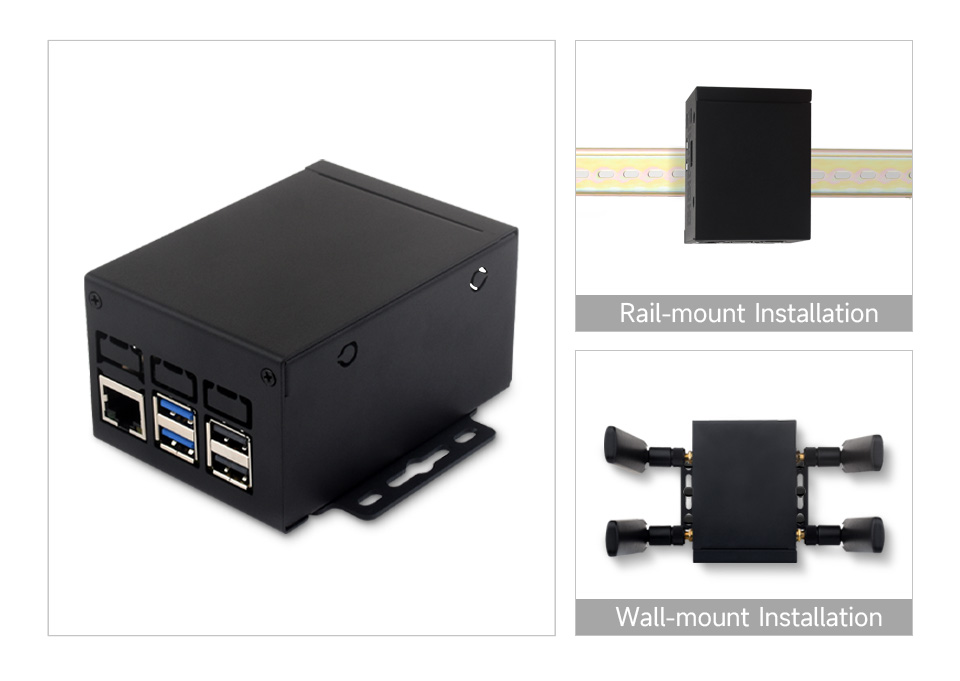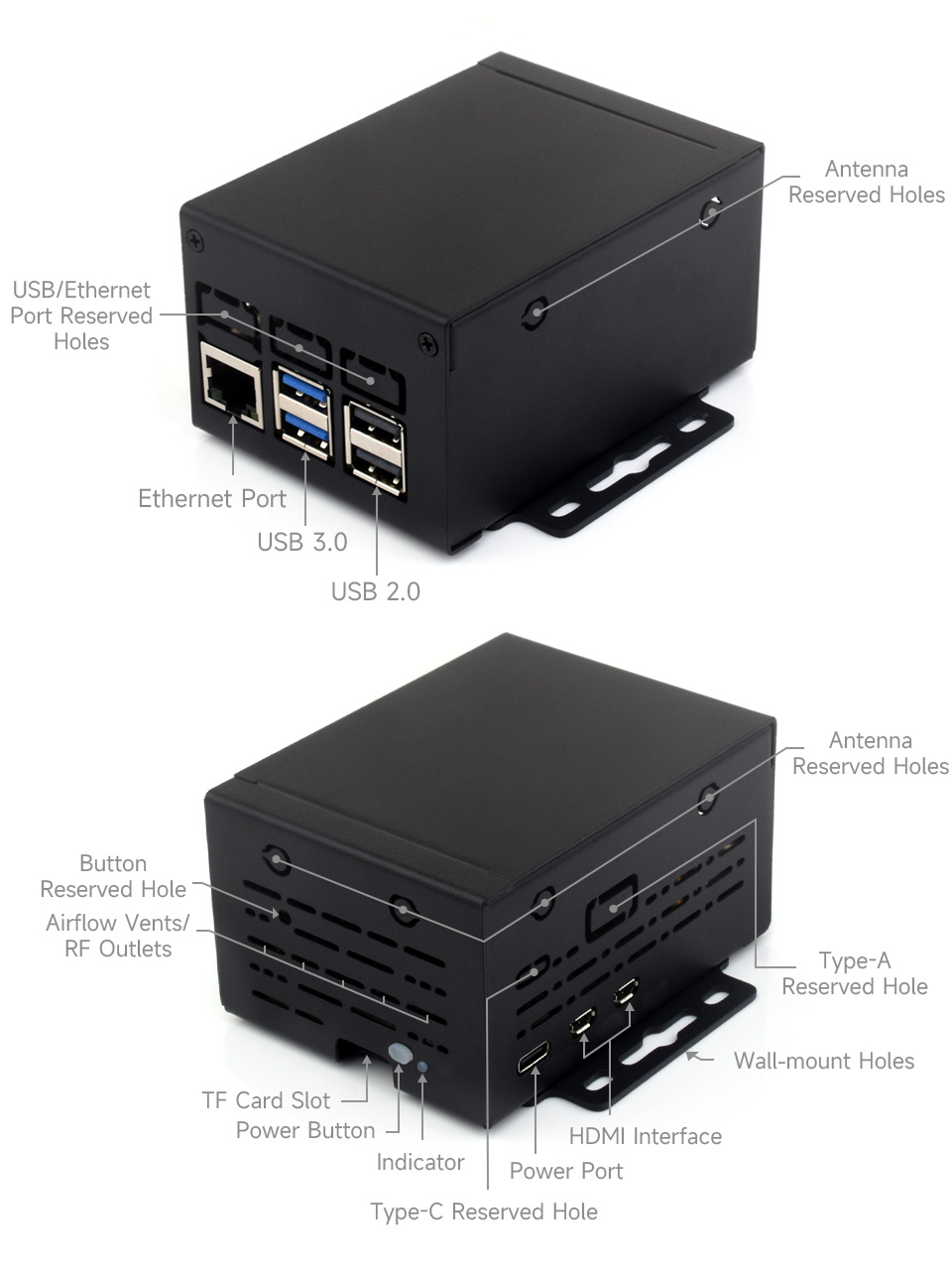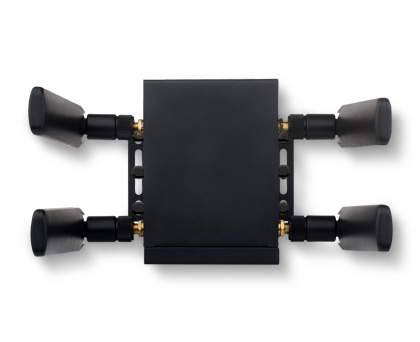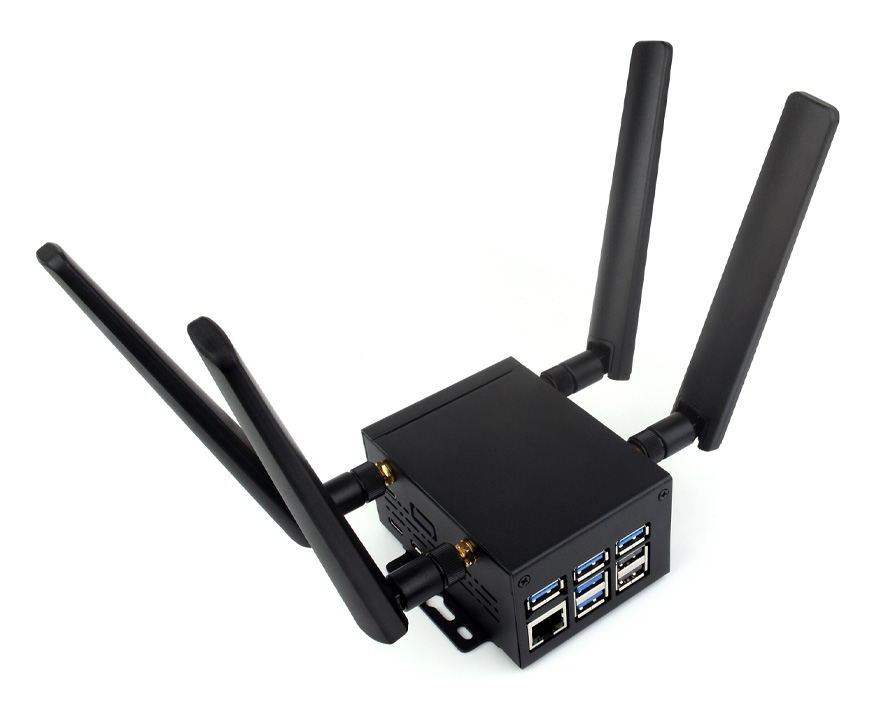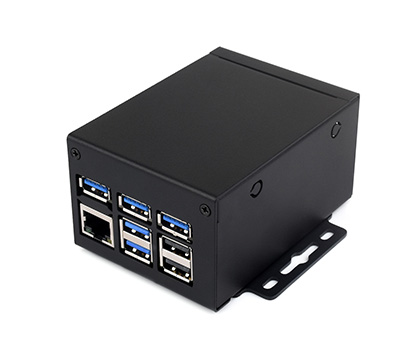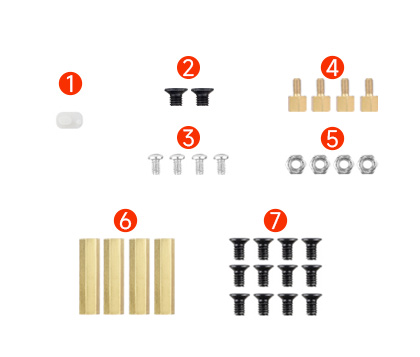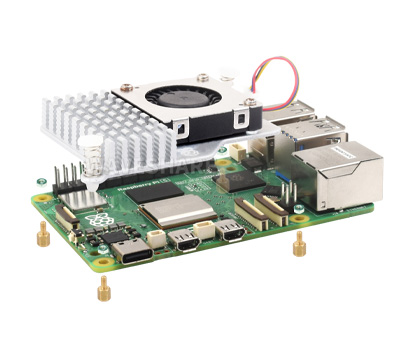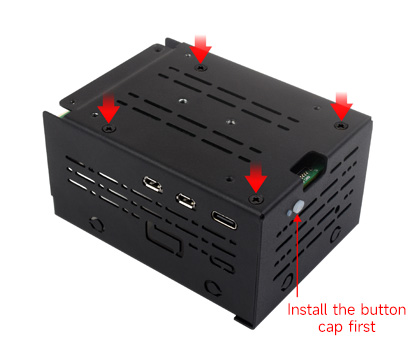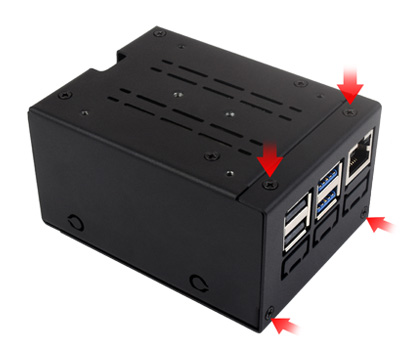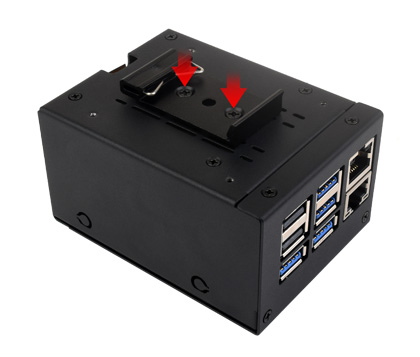- Tìm kiếm nhiều:
- AI Computer
- Raspberry Pi
- NVIDIA Jetson
- Máy tính nhúng
- Màn hình LCD ....
Giá chưa bao gồm thuế giá trị gia tăng (VAT)
Sản phẩm nhập khẩu chính hãng từ Waveshare
Hỗ trợ kỹ thuật trong quá trình sử dụng
![]()
Hỗ trợ mua hàng : 02436.231.170 or 0984.058.846
Tư vấn kỹ thuật Raspberry Pi và RS232/RS485 to Ethernet : 0862.628.846
Tư vấn kỹ thuật Module khác : 0866.828.846 or 0862.998.846
VUI LÒNG LIÊN HỆ ĐỂ ĐƯỢC HỖ TRỢ KỸ THUẬT VÀ ĐẶT HÀNG TRỰC TIẾP
Rail-mount and Wall-mount Support, Larger Internal Space, Supports installing various HATs and Expansion Boards
* for reference only, the Raspberry Pi 5 is NOT included.
Metal case with simple appearance design, Compatible with Most HATs/Modules and Accessories of Raspberry Pi 5
Each Cut-Out Is Completely Aligned With The Interfaces of Raspberry Pi 5, with removable reserved holes. It also has reserved antenna holes and RF outlets to reduce signal attenuation of WiFi and Bluetooth communication
Note: The reserved holes are designed with removable panels. Users can cut them open with needle-nose pliers according to the interface requirements of internal HAT or expansion board.
More flexible for industrial installation and use
Comes with rail-mount bracket, supports 35mm standard guide rail
Wall-mount installation
Installing with PCIe TO 4G/5G M.2 USB3.2 HAT+
Installing with PCIe TO MiniPCIe GbE USB3.2 HAT+
Installing with PCIe TO Gigabit ETH USB3.2 HAT+
* for reference only, the Raspberry Pi, external antennas and PCIe HATs are NOT included.
Prepare the screws as shown above. The following is an assembly demonstration using Raspberry Pi 5 and the official cooling fan.
1. Install the cooling fan to the Raspberry Pi 5 with 4x ④ copper standoff and 4x ⑤ nut (or ⑥ copper standoff).
2. Install the ① button cap to the hole on the bottom case, align the interface holes to install the Raspberry Pi 5, and fix the Pi via 4x ⑦ screw.
3. Align the top cover to the USB/ETH ports of Pi 5 and snap it into the bottom case, and assemble them together with 4x ⑦ screw.
4. Then install wall-mount or guide rail bracket according to your needs.
Wall mounting: use 4x ⑦ screw to install the wall-mount bracket to the position shown in the picture.
Rail mounting: use 2x ② screw to install the rail-mount bracket to the position shown in the picture.
Prepare the screws as shown above. The following is an assembly demonstration using Raspberry Pi 5 and the PCIe to M.2 NVMe SSD (LINK HERE) or PCIe to 2-CH M.2 HAT Dual NVMe SSD (LINK HERE)
With PCIe to M.2 NVMe SSD


With PCIe to 2-CH M.2 HAT Dual NVMe SSD

With PCIe to M.2 NVMe SSD + PoE HAT (F) (LINK HERE)
